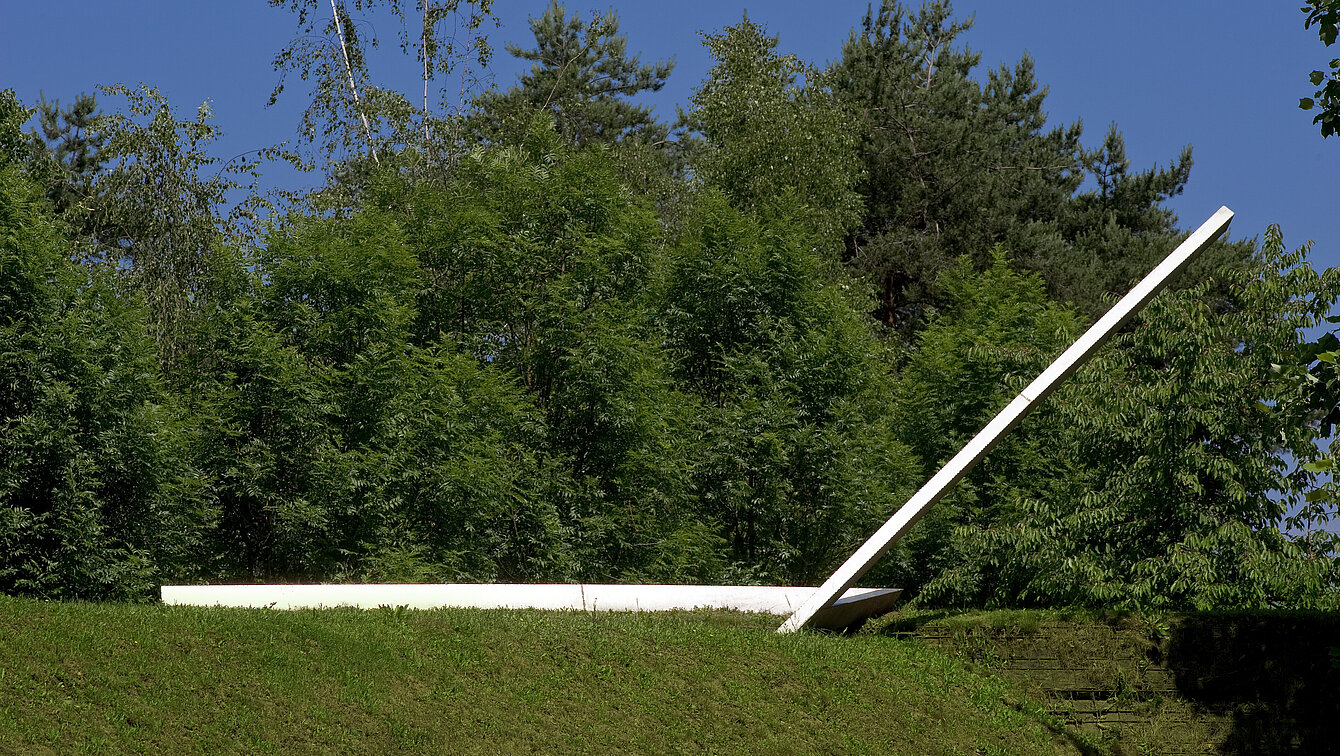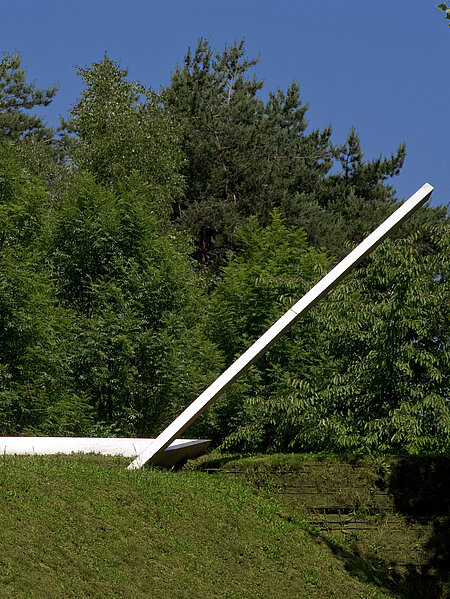Jetzt at first appears simply to be a double-angled steel rail. It can, however, also be read as the diagram of a (personal) development—as a time axis, in a sense, heading towards the emerging part of the present, towards the moment. Dots are inscribed along its sides that mark distinct periods of time, or perhaps stages of life. The path here does not run in a straight line, but makes sudden, dramatic changes of direction—a metaphor for the unexpected, the unpredictable, the detours and blind alleys in life.
Now
Oskar Höfinger, 1986


Image Credits
Author
Peter Peer, Kurztext adaptiert von Lisa Schantl und Lukas Sperlich
Location on map
Owner
Gemeinde Wien
Artist biography
Oskar Höfinger
Show all
About the sculpture
Despite the fact that one might recognise some kind of affinity between Höfinger’s sculptures and works of Minimal Art, in reality they are well distanced from it. Höfinger’s forms are always allocated meaning, contents and thoughts, as well as abbreviations and symbols that give form to the unrepresentable.
As a student of Fritz Wotruba, Höfinger first perceives dealing with humans as an essential starting point. He studies significant processes of movement and postures of the human body, which he then transfers to figures with strong gestural expression which – due to their decisive formal reduction – often appear like symbols of themselves. In addition, he starts to process phenomena beyond the tangible and concrete: various kinds of sensations, emotions, leading to the creation of works entitled such things as “Poetry”, “Music” or “Fascination”.
Furthermore, Höfinger deals with religious themes. Partially, he will choose the approach via a completely free language of forms, with no concrete reference, conveying the contents on a purely symbolic level. “Jetzt” (Now) appears at first to be a double angle steel bar; in addition it is to be read as the diagram of a (personal) development – to some extent it is a timeline with its aspiring component clearly aiming towards the present moment in time. Its sides are marked with dots that indicate individual temporal sections, or “sections of life”.
As regards this aspect, however, the frugal form experiences a dramatic shift of emphasis: the path does not run straight, but in sudden, fierce changes of directions. Thus a critic talked about the “shiny memorial to a time going wrong”. Which is exactly we can see this spatial drawing as a metaphor for the unexpected, the unforeseeable, for the scenic and mistaken routes in the dynamical process of life.


















